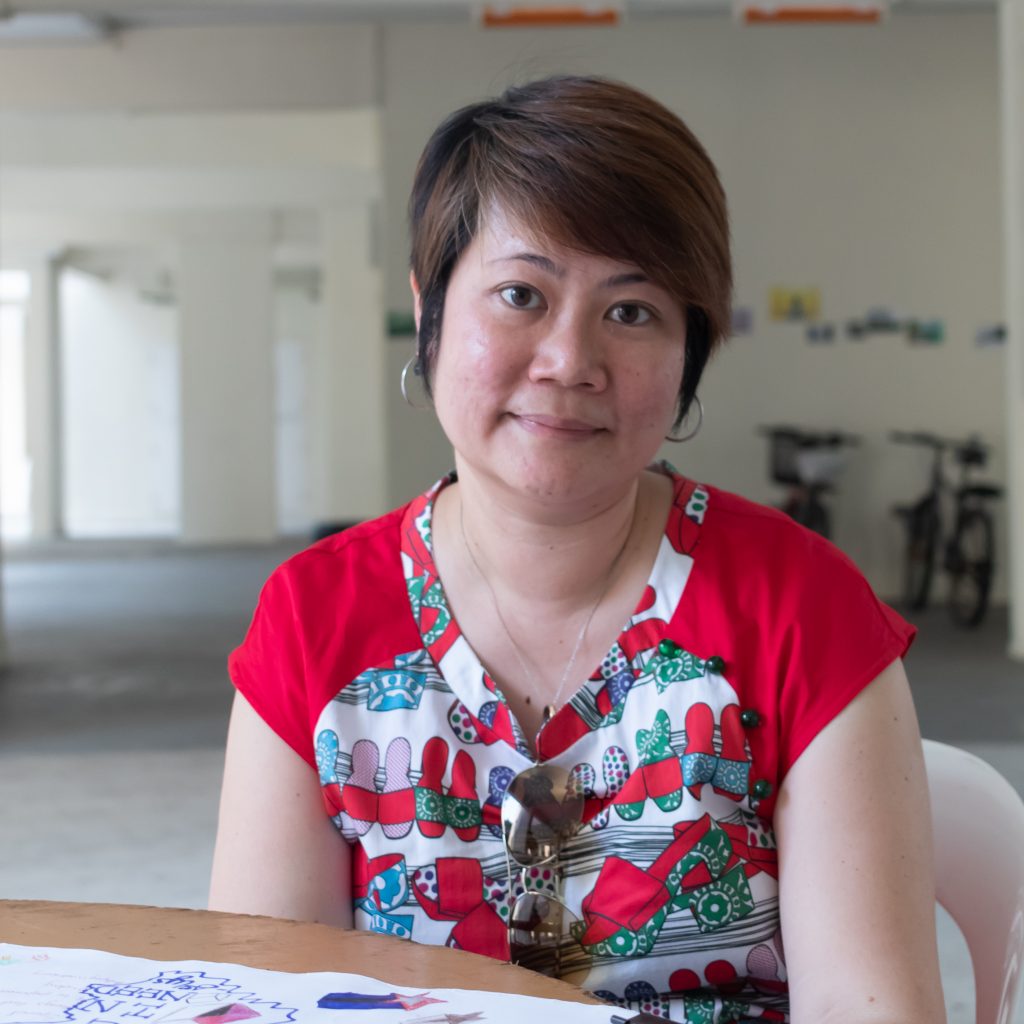
Meet Ngiam Su-Lin, 44, Co-founder and Executive Director of ArtsWok Collaborative, an arts-based NPO that engages the general public via community-based arts projects, research and advocacy. The ArtsWok team partners with organisations and groups to put up participatory performances and public art installations examining various social issues, presents plays by young people on social issues in an annual theatre festival, and trains and mentors practitioners in arts and community work. Su-Lin herself is no stranger to the local arts scene—she’s worked in this space for almost two decades, producing community theatre and festivals—but she’s also a trained counsellor and served briefly as a pastor. ISHAN SINGH speaks to her about her artful quest to create dialogue, invite social participation and bridge differences.
Looking at your professional background, it appears you’ve always been serving the community in one way or another. Did you always have a passion to work in this space?
Growing up, I was always part of a community or another, from uniformed groups, to religious or cultural organisations. But I attribute my passion for community development work mostly to my parents. They are themselves educators and social workers, and so I was raised on the strong belief that leading a meaningful life involves doing your part to better society, making yourself useful to your community and working for social justice. Seeing my parents’ contributions over the years—through their paid and voluntary work—motivated me greatly, and helped me recognise the power of working collectively to effect change and development.
You graduated with a double degree in theatre and psychology from the National University of Singapore and obtained your MA in Drama-in-Education from Queensland University of Technology. Would you say that your present work encompasses both fields of theatre and psychology?
I’m passionate about both disciplines, which are closely interconnected. They essentially involve the study and understanding of people, such as what makes us tick and how we relate to one another. In fact, my dual interests in psychology and theatre led me to pursue a Master’s degree in counselling, and in drama education. Throughout my career, I’ve always found ways to apply my knowledge in the various fields. For instance, with ArtsWok, we may be situated within the arts scene, but we have many opportunities to bridge links with other disciplines through projects that explore topics including end-of-life issues, ageing and mental health. Additionally, we get the chance to look beyond individuals or any specific community—to examine the structural or systemic side of things, which is important when it comes to community development or social change.
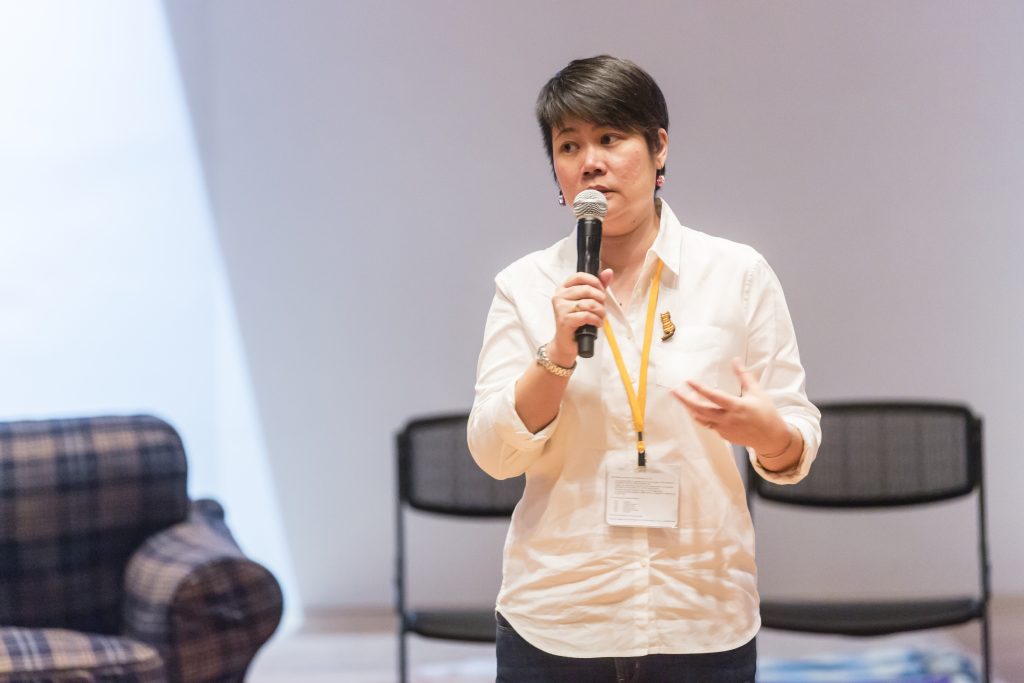 Su-Lin briefing participants at M1 Peer Pleasure Youth Theatre Festival, 2016. Photo courtesy of ArtsWok Collaborative.
Su-Lin briefing participants at M1 Peer Pleasure Youth Theatre Festival, 2016. Photo courtesy of ArtsWok Collaborative.
What is it about the arts that makes it such a powerful communicator?
The beauty of the arts is that it activates us fully—cognitively, emotionally, sensorially—and taps into our innate creativity and wisdom. Through the imagination, it allows us to express ourselves in deep and profound ways that can transcend ordinary language or usual thought processes. It is this unique ability of the arts—to uncover other ways of thinking, seeing, listening, communicating and connecting—that helps us find innovative solutions, create new value, and relate to people and issues. For instance, a good storytelling in any medium enables us to imagine and empathise, and can inspire eventual action and change.
If the arts is the secret sauce that releases the imagination and holds the space for personal and social change, what does the “wok” stand for in ArtsWok?
The wok is that space and the conditions we create for any variety and amount of ingredients to be tossed in, resulting in a range of dishes that caters to different tastes.
What are the benefits of participating in arts-based community programmes, such as those offered by ArtsWok?
From our observations, participants learn more about themselves and others through the process of coming together to create and contribute to a larger cause. For instance, at our youth theatre festival, M1 Peer Pleasure, young people get the opportunity to connect with peers across different socio-economic backgrounds and of varying abilities. Performance art thus becomes their common platform to tell stories about social issues that speak to them, and to present their craft to a public audience. With Both Sides, Now, we co-present with Drama Box a series of workshops, activities and performances to spark meaningful dialogue about mortality and end-of-life issues. In the process, seniors work with artists to create and exhibit original artworks, which aim to encourage people to reflect more deeply on the topics of living and dying. Many fruitful collaborations have also resulted between participants of our Greenhouse Sessions, in which practitioners across the various disciplines—the arts, social sciences, health, policy and so on—gather regularly to network, exchange ideas and have conversations about arts-based community development.
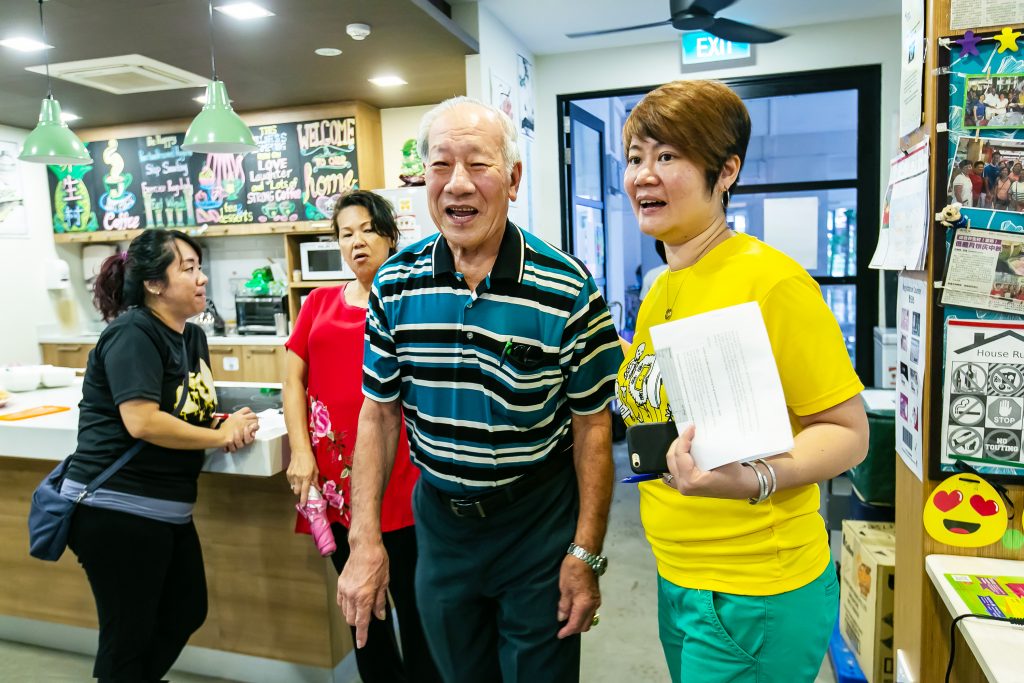
Su-Lin with senior participant of Both Sides, Now at the 2018 press conference. Photo courtesy of ArtsWok Collaborative.
How would you describe your ArtsWok journey thus far?
A rollercoaster ride! Intense, thrilling, emotional, sometimes scary and other times exhilarating. However, the speed of the ride can be calibrated, and it needs to stop every now and then for maintenance and repairs. Most importantly, it’s a ride I’ve chosen to get on, and I’m thankful for my team, as well as the resources and opportunities that have come our way. The work as an arts intermediary can be challenging, though. As creative producers working across sectors (arts, social, community, health, urban planning and so on), our role isn’t always immediately understood and a significant part of our work is invisible. Very often, a lot of our contributions happen “backstage”, where we’re stitching partnerships and resources together, conceptualising with artists and writing proposals, thinking about evaluation and impact, conducting training, engaging communities, writing reports and articles, and refining our approach.
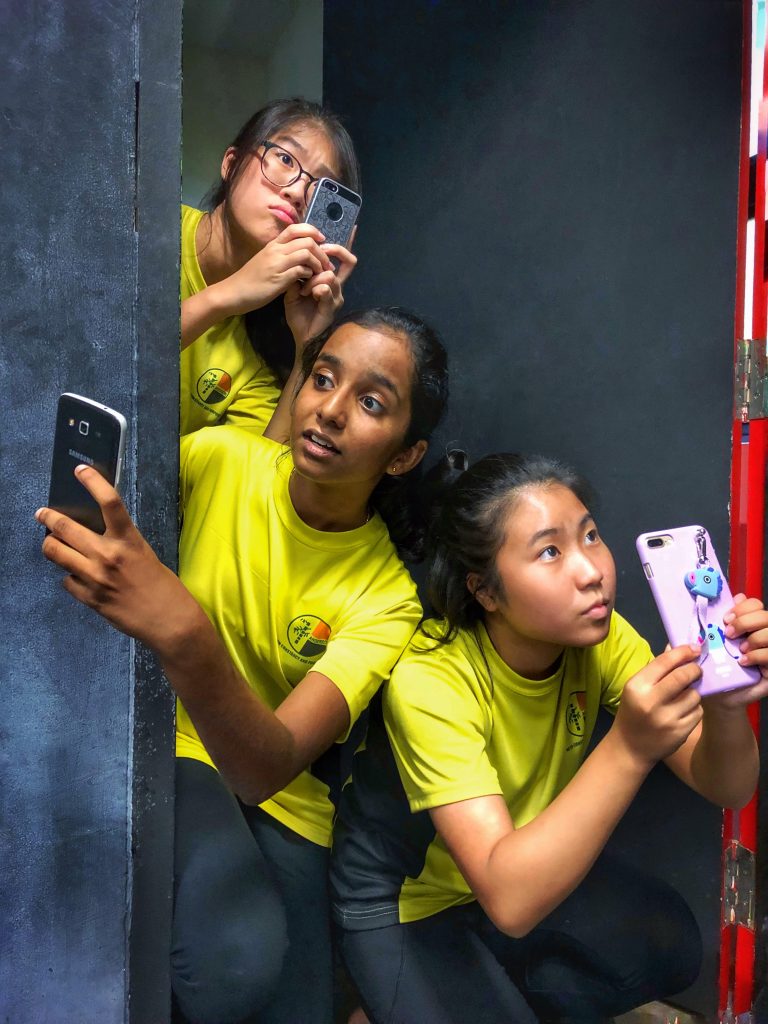 Students from Anderson Secondary School take part in M1 Peer Pleasure Youth Theatre Festival. Photo courtesy of Anderson Secondary School.
Students from Anderson Secondary School take part in M1 Peer Pleasure Youth Theatre Festival. Photo courtesy of Anderson Secondary School.
Nonetheless, what we do is also exciting and refreshing because we’re situated at the crossroads of various disciplines. We’re constantly learning, innovating and flexing our creative and imaginative muscles. In a sense, anything is possible. Because our work is highly tailored to each project or programme, it’s both community-centric, as well as highly relational and dialogic. The magic happens when we listen and pay close attention to the intricacies of collaborations, and the dynamics that exist in communities. Along the way, we get to connect with so many inspiring people and intimately understand what it means to co-exist.
Among all your projects, which has been your personal favourite?
Both Sides, Now ranks high on my list. A unique and long-running project (it kicked off in 2013), it’s fully financed by our partners, the Lien Foundation, Ang Chin Moh Foundation, Tote Board and Agency for Integrated Care. Thanks to the creative room we’ve been accorded for design and implementation, we’ve been able to experiment with various approaches and processes with multiple communities, collaborate with different organisations, train and work with about 400 volunteers, and connect with individuals across diverse backgrounds. Both Sides, Now is essentially a project about our humanity and hope, and we’re grateful to those who generously shared their stories, vulnerabilities and strengths through this initiative.
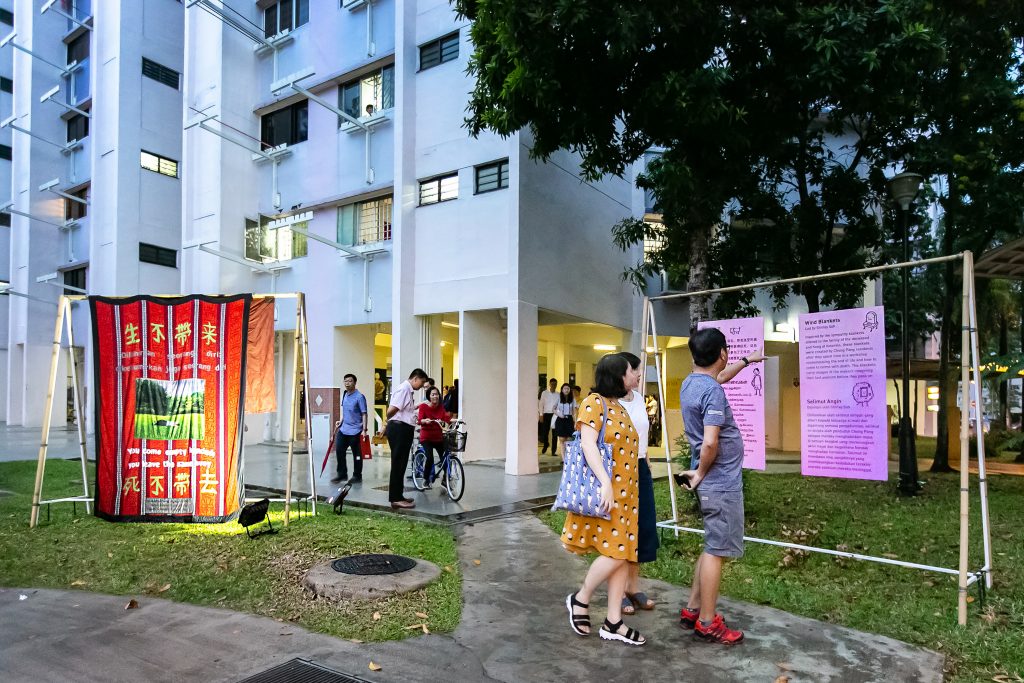
Both Sides, Now. Photo courtesy of Zinkie Aw.
What advice would you give to someone who’s looking to pursue a career path similar to yours in the arts industry?
You need to enjoy being with communities and have a love for the arts. To be an arts intermediary, you must be curious about everything. Expose yourself to various art forms to understand its approaches and processes, and read widely across disciplines so you can relate to and connect broadly with a wide range of stakeholders, collaborators and partners. Finally, practice makes perfect: hone and improve your skills and competencies by volunteering in community-based projects. It’s an exciting and very relevant time to be an arts intermediary for community work. There is a need for more ground-up work and action. In Singapore society as well as globally, we are constantly innovating and challenging ourselves to go further. Can there can be newer and better ways to co-exist, lead, govern and sustain ourselves? To arrive at those answers, people cannot work in silos, but need to collaborate across communities.
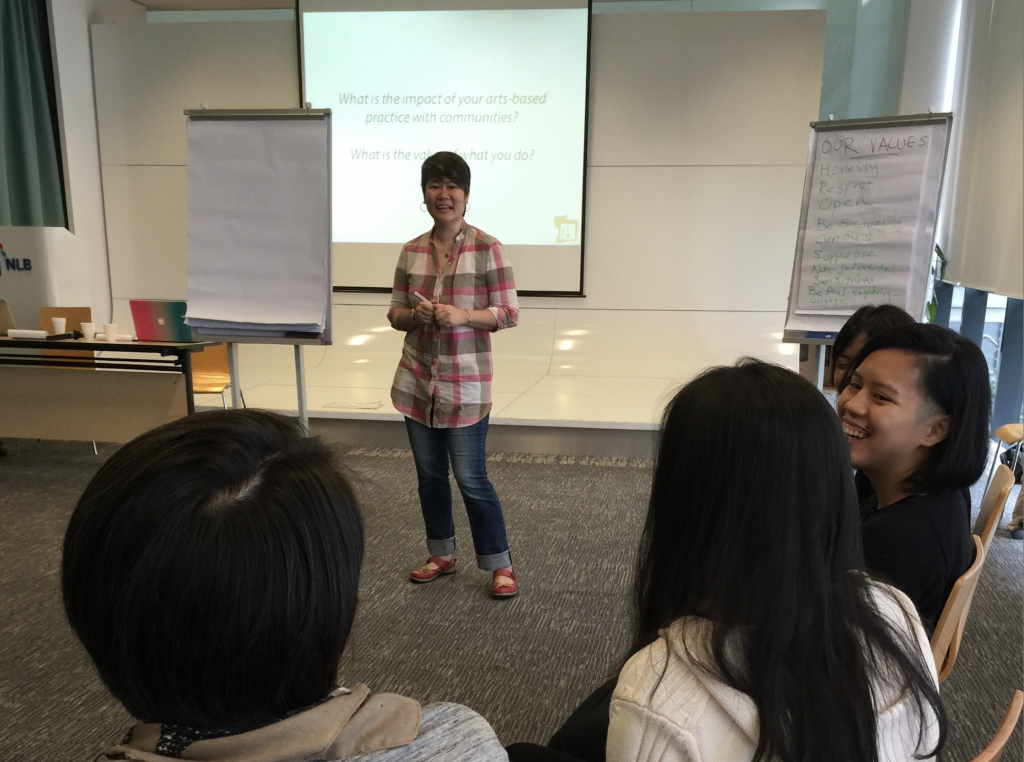 Su-Lin facilitating at The Greenhouse Lab, 2016. Photo courtesy of ArtsWok Collaborative.
Su-Lin facilitating at The Greenhouse Lab, 2016. Photo courtesy of ArtsWok Collaborative.
What’s in the pipeline for ArtsWok?
We’re starting to plan for a 2020 symposium focusing on arts and community development. Besides featuring local practitioners, we hope to invite regional and international practitioners as well. Through a broader exchange, participants can learn about more approaches to arts-based community development. In the longer term, we’re also considering having a space for a creative community centre, to be sited in a diverse neighbourhood. It will be led by arts practitioners working in collaboration with relevant community partners (ideally all housed within this same space), with the surrounding community as a significant stakeholder. Apart from the programmes and services offered at the centre, the multi-disciplinary practitioners will go out into the neighbourhood spaces. Essentially, the work would be about cultivating individual and community agency: residents will be involved in co-creating their neighbourhood and have ownership over the development of their community. We also want to develop an ecosystem where artists receive the necessary support to actively collaborate with relevant partners to tackle society’s biggest challenges.
Your vision is so inspiring. Who in turn inspires you?
Definitely my parents, who are my role models and who set the bar high for community development work. Additionally, I look up to several people in the arts industry, some of whom were my mentors. They include Alvin Tan and Haresh Sharma (The Necessary Stage), Ong Keng Sen (TheatreWorks) and Kok Heng Leun (Drama Box)—all amazing arts practitioners with great vision and who give their talents selflessly. The late Rev. Dr. Yap Kim Hao is also a big inspiration: I admire his contributions to the LGBTQ community in Singapore, and how he championed social justice throughout his lifetime.
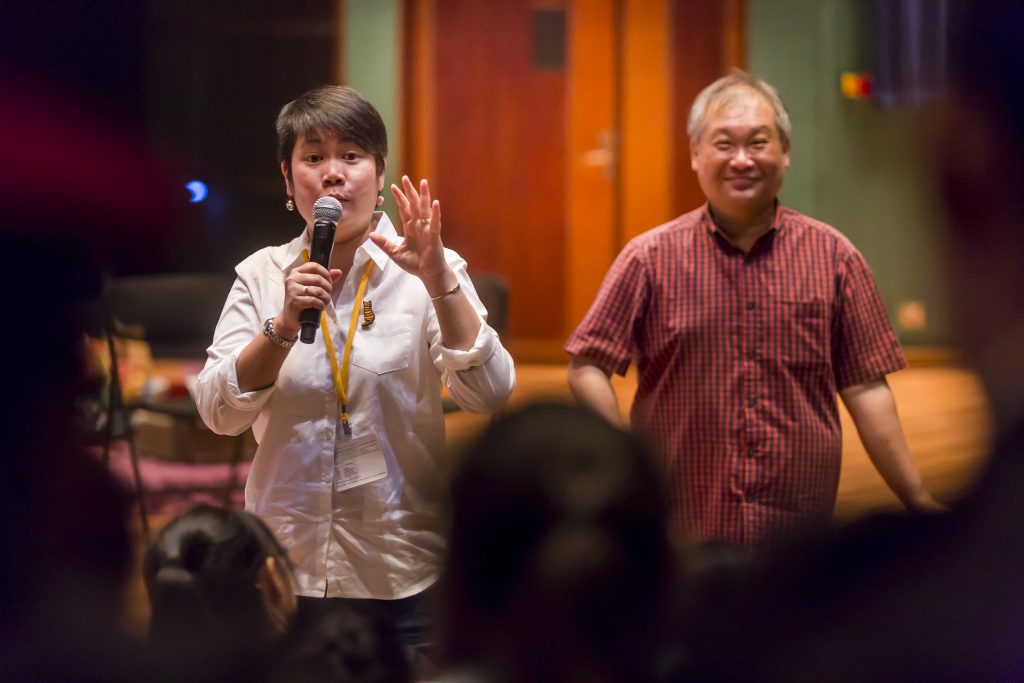 Su-Lin with Alvin Tan, former Artistic Director of M1 Peer Pleasure Youth Theatre Festival, 2016. Photo courtesy of ArtsWok Collaborative.
Su-Lin with Alvin Tan, former Artistic Director of M1 Peer Pleasure Youth Theatre Festival, 2016. Photo courtesy of ArtsWok Collaborative.
What would you be doing if you didn’t start ArtsWok?
Something still related to community development. Maybe I’d run a bookshop that conducts programmes, workshops and events, and which serves as a alternative community space.
Banner photo: ArtsWok Collaborative’s Thought Exploration activity: Can we call a public space our own? How is personal identity and belonging created in relation to public space? Photo courtesy of ArtsWok Collaborative.
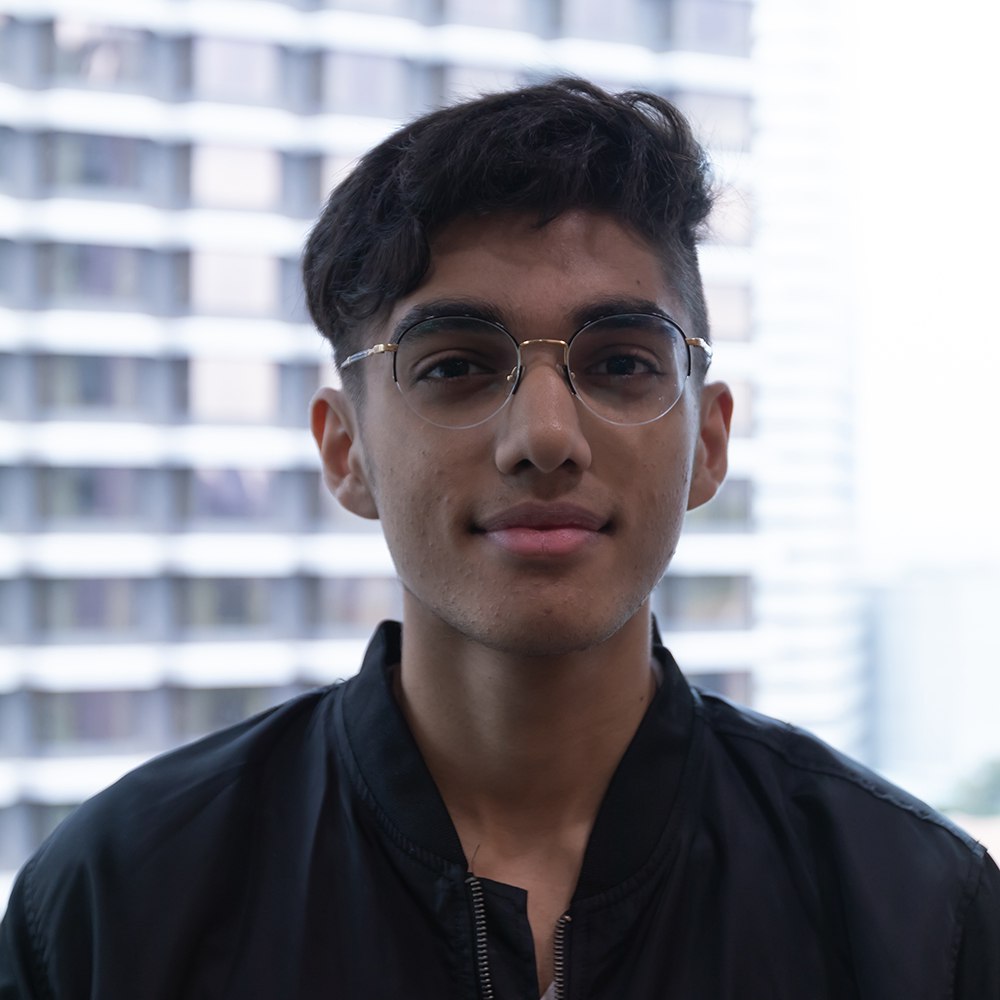 |
Ishan Singh is a second-year undergraduate at the Singapore Management University’s Lee Kong Chian School of Business, and an Editorial Assistant at Social Space Magazine. He spends any spare time he has rapping or producing music, and hopes to pursue a career in music. Passionate about the arts and writing, Ishan hopes to write articles and make videos that shed light on the importance of the arts in our communities. He can be reached at ishan.singh.2018@business.smu.edu.sg |

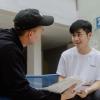


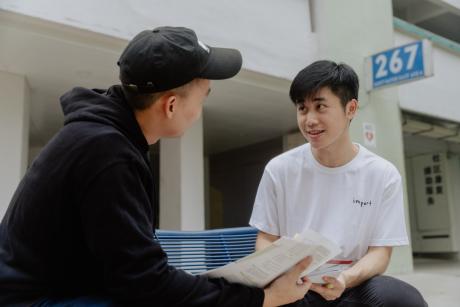



Comments